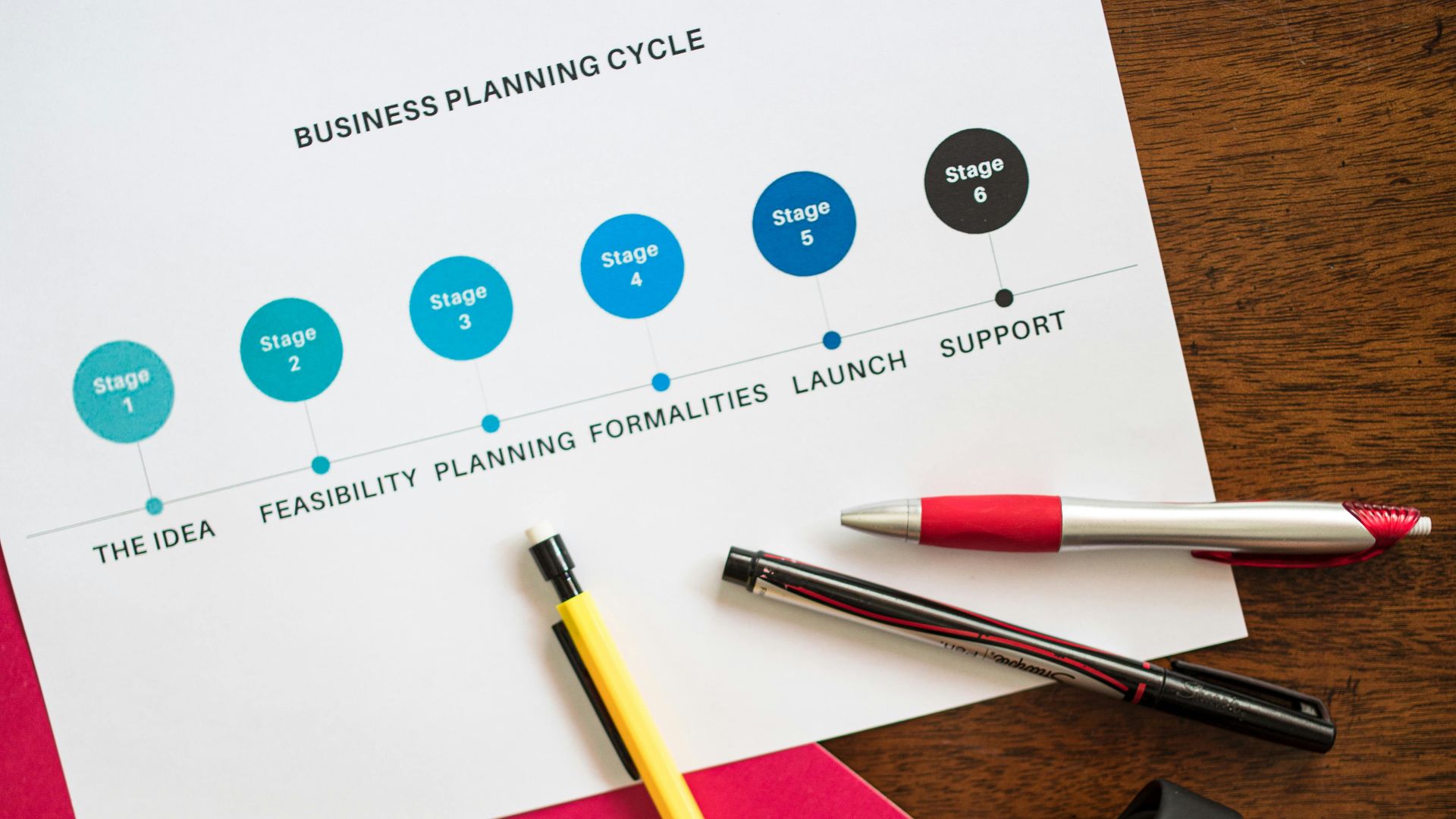The Blueprint For Financial Strength
Building wealth depends not just on what you buy but also on how you hold it. All great portfolios must have a commitment to long-term planning and more. So, where do you start?

Define Your Goals Before You Buy Anything
A portfolio without clear goals often becomes reactive. Investors who define priorities like retirement timelines or income needs tend to choose assets that match their risk tolerance. Purposeful planning reduces the chance of misalignment between decisions and what matters most.
Train Your Mind Before Trusting The Market
A 2017 study by Dalbar found that average investors underperform the market because of emotional decision-making. Selling during downturns and chasing rallies harms returns. Strategies like automation and clear investment rules help counteract these costly behavioral patterns over time and improve outcomes.
 Photo By: Kaboompics.com, Pexels
Photo By: Kaboompics.com, Pexels
Balance Risk So One Hit Doesn’t Sink It All
How you divide your portfolio matters as much as what’s in it. Proportion strategies—like a 60/40 equity-bond split or risk parity—help balance growth with protection. They ensure no single part of your portfolio overwhelms the rest when markets turn.
 Photo By: Kaboompics.com, Pexels
Photo By: Kaboompics.com, Pexels
Read The Economy Before You Rebalance
Economic expansions and recoveries each affect asset classes differently. During downturns, defensive sectors like utilities and healthcare tend to hold value. In recoveries, cyclical industries rebound faster. So, recognizing where the economy stands helps support timely and informed portfolio adjustments across shifting market phases.
Let Time Work Harder Than You Do
You must’ve noticed that investors who hold through volatility tend to outperform those who make reactive shifts based on short-term fear. That’s because short-term moves often sabotage portfolio growth. Research shows that staying invested through downturns yields better returns than timing exits. Compounding needs time, not speed.
Spread Risk Across Multiple Asset Types
Real diversification goes beyond stocks and bonds. Adding commodities, real estate, crypto, or collectibles can break market correlation. These non-traditional components move differently from standard holdings and give your portfolio more tools to weather unpredictable conditions.
Lean On Blue-Chips For Steady Growth
These aren’t flashy picks. Large, stable companies maintain reliable earnings and dividends across market cycles. They carry less risk during downturns and provide a solid foundation for long-term growth. Their size and stability make them favorites among investors seeking dependable returns.
Use Bonds To Stabilize Market Fluctuations
Bonds serve a dual purpose. They generate predictable income and reduce the damage from market declines. Government bonds offer safety, while corporate bonds offer extra yield. Including them creates a cushion that supports portfolio value when stocks lose ground due to economic shifts.
Add Real Estate To Break Stock Market Cycles
Property investments offer both income and inflation resistance. Real estate investment trusts (REITs) provide market access without owning buildings. Their returns can move independently from equities. This uncorrelated behavior makes them a practical way to diversify beyond traditional financial instruments.
Keep Cash Handy For What You Can’t Predict
Cash gives you flexibility when markets shift. It avoids forced selling, maintains portfolio targets, supports timely opportunities, and covers withdrawals without sacrificing long-term strategy. When markets move quickly, having cash helps you act clearly while others may be forced to react.
 Photo By: Kaboompics.com,Pexels
Photo By: Kaboompics.com,Pexels
Choose Index Funds For Efficient Growth
Index funds offer a simple path into the broader market by matching the performance of a chosen market benchmark, such as the S&P 500. With minimal fees, reduced reliance on fund managers, and built-in diversification, they’re a practical choice for sustained, long-term investment growth.
Compare Expense Ratios Before You Commit
A fund charging 1.00% annually may seem similar to one charging 0.10%, but the difference compounds significantly over time. Higher costs reduce returns. Reviewing expense ratios ensures more of your money stays invested by improving your chances of meeting long-term financial goals.
 Photo By: Kaboompics.com,Pexels
Photo By: Kaboompics.com,Pexels
Invest Consistently With Dollar-Cost Averaging
Consistency often matters more than timing in wealth building. This strategy invests fixed amounts regularly, regardless of market conditions. It builds discipline, avoids emotional decision-making, spreads purchases across price levels, and reduces the chance of buying at a market high.
Reinvest Dividends To Strengthen Compounding
Dividends aren’t just payouts. When reinvested, they purchase more shares, which then generate their dividends. This compounding effect builds momentum over time by increasing portfolio growth even without new contributions. Reinvestment is a powerful tool for investors focused on long-term value.
Use Accounts That Cut Your Tax Burden
Tax-advantaged accounts protect earnings from immediate taxation. Roth IRAs grow tax-free, while 401(k)s defer taxes until withdrawal. Placing high-yield or heavily taxed assets inside these shelters reduces tax drag and allows investments to compound more efficiently throughout the years.
Add Alternatives To Steady The Ride
Beyond stocks and bonds, alternatives like gold, private equity, or hedge strategies help portfolios ride out market storms. These assets respond differently to economic shifts, so including them protects long-term value when traditional investments move together under pressure.
Look Abroad To Limit Local Risks
Keeping all investments in one country ties performance to that economy alone. International markets offer access to regions that may thrive when domestic markets lag. Global diversification helps reduce exposure to regional downturns and spreads risk across currencies and policy environments.
Guard Against Inflation With Real Assets
Rising inflation reduces purchasing power over time. Real assets such as real estate and inflation-linked bonds typically hold value during these periods. Allocating to these areas helps a portfolio maintain strength when everyday costs and interest rates increase.
Use Leverage Thoughtfully, Not Eagerly
Leverage can magnify gains but also expose your portfolio to heavier losses. It should only be used as part of a carefully constructed plan. Before borrowing, ensure the strategy is sound, the returns are worth the risk, protections are in place, and the debt can be repaid even in a downturn.
Stay Nimble When Conditions Change
Portfolios drift as markets shift. Inflation or changing life goals may warrant allocation changes. Timely rebalancing helps maintain your target mix and prevents overexposure. Adjusting to new realities makes a portfolio sturdier without jumping on passing market trends.
Invest In What Aligns With The Future
Sustainable investing goes beyond personal values; it functions as a risk management tool. ESG strategies often screen for governance strength, environmental exposure, and labor practices. These filters can help avoid reputational pitfalls and open long-term value in sectors better positioned for regulatory and social change.
Stay Curious To Stay Ahead
Financial rules shift, and so do markets. Staying informed about tax policies, new investment vehicles, global trends, or evolving retirement rules helps sharpen strategy. A commitment to learning strengthens confidence and reduces reactionary moves. The best portfolios are shaped by knowledge that grows as markets evolve.
Ask For Expertise When It Counts
Even seasoned investors miss things. Financial advisors clarify estate planning or insurance needs that might be overlooked. Expert guidance can reduce costly mistakes and tailor plans to fit better goals, timelines, insurance strategies, and real-life scenarios when stakes are high.
Monitor Tax Implications Of Rebalancing
Rebalancing your portfolio can trigger capital gains taxes when selling appreciated assets. This impacts net returns, especially in taxable accounts. Consider tax-loss harvesting to offset gains. Timing and technique matter—plan rebalancing carefully to maintain strategy while limiting the IRS’s share of your profits.
Plan Ahead To Pass It On Smoothly
Legacy planning protects both your assets and your intentions. Tools like trusts and beneficiary designations help avoid probate delays and reduce estate taxes. With careful planning, what you have created transitions smoothly to the next generation, free from unnecessary legal issues or financial loss.




























